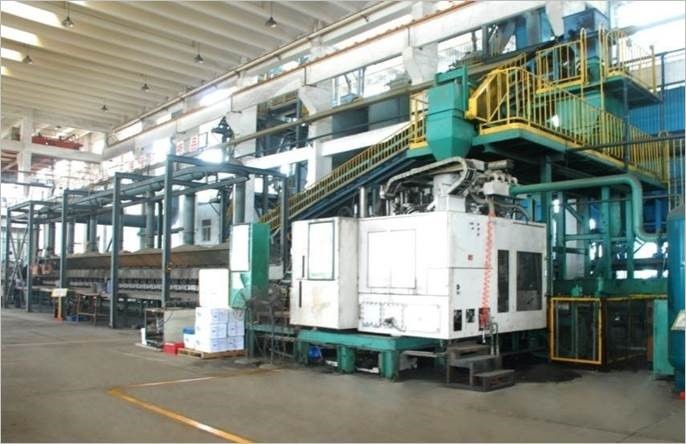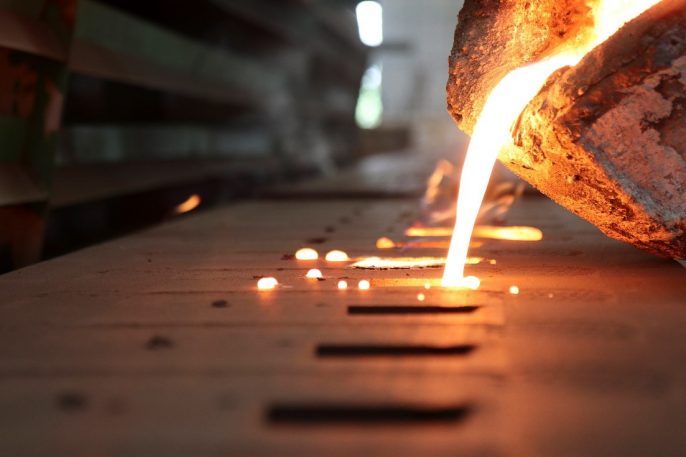Difference in Horizontally-Parted and Vertically-Parted Green Sand Casting Process
Manufacturers use a wide variety of techniques to cast large and small parts. Green sand casting involves the use of recyclable sand that does not require any chemical additives to bind the sand. Instead, it only relies on the use of sand, clay, and water as the moisture acts as the binder. This process is used with nonferrous and ferrous metals.

The main process starts with using a three-dimensional pattern of the part. Then the mold is created using sand as later the molten metal will be poured into the mold to cast the part. How the mold is made will depend on the equipment, as two common processes are horizontally parted and vertically parted processes.
Horizontally-Parted Sand Casting
Horizontally-parted sand casting has a drag that is the bottom of the mold and a cope that is the top section of the mold. The 3-dimensional pattern is placed inside the drag as the sand is poured inside. The similar separate process occurs with the cope. Once the sand binds, the patterns are removed from the cope and the drag. Then the cope and the drag are latched together. The molten metal is poured through the gating system into the sand mold.
Horizontally-parted sand casting simply refers to how the cope and the drag are created and then connected. In this process, both the cope and the drag are filled with sand separately, then the cope is placed on top of the drag to create the final casted part. Horizontally-parted sand casting is ideal for low volume castings. It is an economical process as the pattern tooling is simple to make. A range of industries benefit from this traditional process as common applications include making gearboxes, pumps, and automotive engine blocks.
Vertically-Parted Sand Casting
Vertically-parted sand casting involves placing the plates on the sides instead of on the top and bottom. One plate is considered a pressure plate and the other is the swing plate as they both will create half of the part pattern.
The pattern plates are placed together as sand is poured inside from the top. The pressure plate and the swing plate press together to compress the sand into half of the desired mold shape. Once the sand binds together, the swing plate moves away and swings up to allow the partial mold to be removed.
The partial mold moves down the line as the next partial mold is created. Both the first and second molds are placed together to form the cavity where the molten metal will pour inside.
Vertically-parted sand casting may be used for high volume production runs. It can make a range of applications including pipe fittings, exhaust manifolds and brake discs.

When selecting either vertically-parted or horizontally-parted green sand casting processes, consider the production volume and sizes of the part. Sizes for these two processes will vary based on manufacturer’s available equipment. Typical sizes for vertically-parted sand moldings may range from roughly 500mm x 400mm (19″ x 15″) up to 1200mm x 1050mm (47″ x 41″). For horizontally-parted sand molds, sizes range from 450mm x 350mm (17″ x 13″) up to 1066mm x 812mm (42″ x 32″). These sizes are for the length and width of the mold, respectively.
Whichever process is picked, you will obtain highly intricate and accurate parts and components. For more information regarding these processes and to discuss your next project, contact Impro.